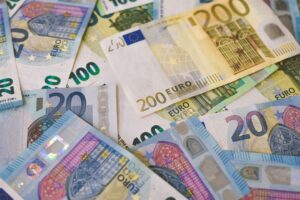The forex market is known for its highly volatile nature, with prices constantly fluctuating. Traders are always on the lookout for reliable trading patterns that can help them identify potential profit opportunities. One such pattern that has gained popularity among forex traders is the forex flag pattern.
The forex flag pattern is a continuation pattern that occurs after a strong price movement, known as the flagpole. It is characterized by a rectangular-shaped consolidation period, known as the flag, which is formed when prices trade in a narrow range. This pattern is considered to be a bullish sign, indicating that the market is likely to resume its upward trend.
To better understand the power of forex flag patterns, let’s take a look at some real-life examples of profitable trades.
Example 1: USD/JPY
In early 2020, the USD/JPY pair experienced a sharp uptrend, with prices rallying from around 108.00 to 112.00 in a matter of weeks. After this strong upward movement, a flag pattern began to form as prices consolidated in a tight range between 111.00 and 111.50.
Traders who recognized this flag pattern could have entered a long position once prices broke out above the upper trendline of the flag. A stop-loss order could have been placed below the lower trendline of the flag to manage risk. As the market resumed its upward trend, traders could have taken profits as prices reached new highs around 112.50.
Example 2: EUR/USD
In mid-2019, the EUR/USD pair experienced a significant downtrend, with prices falling from around 1.1400 to 1.0900. After this downward movement, a flag pattern started to form as prices consolidated between 1.0950 and 1.1000.
Traders who identified this flag pattern could have entered a short position once prices broke below the lower trendline of the flag. A stop-loss order could have been placed above the upper trendline of the flag to limit potential losses. As the market resumed its downward trend, traders could have taken profits as prices reached new lows around 1.0800.
Example 3: GBP/USD
In late 2017, the GBP/USD pair experienced a strong uptrend, with prices surging from around 1.3000 to 1.3600. Following this upward movement, a flag pattern began to form as prices consolidated between 1.3500 and 1.3550.
Traders who spotted this flag pattern could have entered a long position once prices broke out above the upper trendline of the flag. A stop-loss order could have been placed below the lower trendline of the flag to manage risk. As the market resumed its upward trend, traders could have taken profits as prices reached new highs around 1.3700.
These real-life examples highlight the power of forex flag patterns in identifying profitable trades. However, it is essential to note that not all flag patterns lead to successful trades. Traders should always consider other technical indicators, fundamental analysis, and risk management principles before executing any trade.
To effectively trade forex flag patterns, traders should follow a systematic approach. Firstly, they need to identify a strong price movement that forms the flagpole. Then, they need to wait for the flag pattern to form, indicating a consolidation period. Finally, traders should enter a trade once prices break out of the flag, confirming the continuation of the previous trend.
In conclusion, forex flag patterns can be powerful tools for traders to identify profitable trades. By understanding the formation and characteristics of these patterns, traders can improve their trading strategies and increase their chances of success. However, it is crucial to combine flag patterns with other technical analysis tools and risk management techniques to make informed trading decisions.





